Do you have a question about the Cisco Nexus 9508 and is the answer not in the manual?
Specifies hardware installers and network administrators as the primary audience for the document.
Details conventions used for commands, arguments, and syntax elements in the document.
Provides a list of related Cisco documentation for NX-OS software and hardware.
Provides contact information for submitting feedback or reporting errors in the document.
Guides users on how to obtain documentation and submit service requests to Cisco.
Provides a general overview of the Cisco Nexus 9508 switch chassis and its components.
Details the acceptable ambient temperature ranges for switch operation and non-operation.
Outlines the required relative humidity levels for the switch to operate correctly.
Defines the maximum operating altitude for the switch and potential issues at higher elevations.
Explains the effects of dust and particulate contamination and provides cleaning precautions.
Offers guidance on reducing electromagnetic and radio frequency interference from the switch.
Confirms the switch has undergone shock and vibration testing for operational ranges and handling.
Explains the necessity of proper grounding for the switch and how to achieve it.
Outlines the process for calculating power requirements for the switch and its modules.
Details the requirements for racks and cabinets suitable for installing the switch.
Defines the necessary clearances around the chassis for installation, airflow, and maintenance.
Guides the user through the process of installing a suitable rack or cabinet for the switch.
Details how to unpack and inspect the new switch for damage and completeness.
Provides instructions for installing the bottom-support rails to ensure chassis stability in the rack.
Outlines the procedure for physically mounting the switch chassis into a rack or cabinet.
Explains how to properly ground the switch chassis for safety and operational integrity.
Covers prerequisites and checks before powering on the switch for the first time.
Offers recommendations for using transceivers, cables, and maintaining optical components.
Details the steps for establishing a console connection for initial switch configuration.
Explains how to connect the switch's management Ethernet port for out-of-band management.
Walks through the initial switch configuration process, including IP addressing.
Describes how to connect BASE-T and optical ports on line cards to network devices.
Shows how to display information about installed hardware modules using the `show hardware` command.
Explains how to display the hardware inventory, including product IDs and serial numbers.
Details how to display backplane information and the switch's serial number.
Describes how to display environmental status, including power supply and module temperatures.
Explains how to view the status of installed modules, including bootup and operational states.
Shows how to display temperature readings from module sensors and understand thresholds.
Guides on how to connect directly to a specific module for troubleshooting or management.
Explains how to shut down or power up individual modules using CLI commands.
Details how to clear the running configuration for a non-functioning module.
Shows how to display the power consumption of installed modules and overall switch power usage.
Explains how to reset a module by power cycling it using the `reload module` command.
Provides instructions on how to reboot or reload the entire switch.
Describes the different types of supervisor modules and their combinations in the chassis.
Details the types of line cards supported by the switch based on fabric module compatibility.
Explains the types of fabric modules and their corresponding supported line cards.
Describes the different power redundancy modes available for the switch.
Details the role of fan trays in cooling and their replacement procedures.
Outlines essential steps to prevent electrostatic discharge (ESD) when handling electronic components.
Provides detailed instructions for installing or replacing supervisor modules in the chassis.
Guides users on how to install or replace system controller modules in the chassis.
Details the steps for installing or replacing line cards in the switch chassis.
Explains how to remove and install fan trays for cooling system maintenance.
Provides instructions for replacing fabric modules, including handling fan trays and module removal.
Covers the process of installing or replacing power supply units in the switch.
Details the steps for upgrading line cards and fabric modules for higher bandwidth.
Lists the environmental conditions, including temperature, humidity, and altitude, for the switch.
Provides the physical dimensions (width, depth, height) of the Cisco Nexus 9508 chassis.
Lists the weight and quantity for various chassis components and modules.
Includes power requirements, available power, and power supply specifications for the switch.
Details supported transceivers, adapters, cables, and RJ-45 connector specifications.
Describes the function and status of the chassis LEDs for module identification and operational status.
Explains the meaning of the LEDs on the system controller modules.
Details the states of the Beacon, Status, and Active LEDs on the supervisor modules.
Describes the LED indicators on the fan trays and their operational status.
Explains the status indicators for the fabric modules located behind the fan trays.
Details the Beacon, Status, and Link LEDs for the line card modules.
Explains the meaning of the OK and FAIL LEDs on the power supply modules.
Lists the components included in the accessory kit, such as rack-mount hardware and cables.
Provides a checklist of site planning activities essential for successful switch installation.
Offers a template for recording contact persons and site-specific information for the installation.
Provides a worksheet to record chassis serial numbers, product numbers, and module details.
Specifies hardware installers and network administrators as the primary audience for the document.
Details conventions used for commands, arguments, and syntax elements in the document.
Provides a list of related Cisco documentation for NX-OS software and hardware.
Provides contact information for submitting feedback or reporting errors in the document.
Guides users on how to obtain documentation and submit service requests to Cisco.
Provides a general overview of the Cisco Nexus 9508 switch chassis and its components.
Details the acceptable ambient temperature ranges for switch operation and non-operation.
Outlines the required relative humidity levels for the switch to operate correctly.
Defines the maximum operating altitude for the switch and potential issues at higher elevations.
Explains the effects of dust and particulate contamination and provides cleaning precautions.
Offers guidance on reducing electromagnetic and radio frequency interference from the switch.
Confirms the switch has undergone shock and vibration testing for operational ranges and handling.
Explains the necessity of proper grounding for the switch and how to achieve it.
Outlines the process for calculating power requirements for the switch and its modules.
Details the requirements for racks and cabinets suitable for installing the switch.
Defines the necessary clearances around the chassis for installation, airflow, and maintenance.
Guides the user through the process of installing a suitable rack or cabinet for the switch.
Details how to unpack and inspect the new switch for damage and completeness.
Provides instructions for installing the bottom-support rails to ensure chassis stability in the rack.
Outlines the procedure for physically mounting the switch chassis into a rack or cabinet.
Explains how to properly ground the switch chassis for safety and operational integrity.
Covers prerequisites and checks before powering on the switch for the first time.
Offers recommendations for using transceivers, cables, and maintaining optical components.
Details the steps for establishing a console connection for initial switch configuration.
Explains how to connect the switch's management Ethernet port for out-of-band management.
Walks through the initial switch configuration process, including IP addressing.
Describes how to connect BASE-T and optical ports on line cards to network devices.
Shows how to display information about installed hardware modules using the `show hardware` command.
Explains how to display the hardware inventory, including product IDs and serial numbers.
Details how to display backplane information and the switch's serial number.
Describes how to display environmental status, including power supply and module temperatures.
Explains how to view the status of installed modules, including bootup and operational states.
Shows how to display temperature readings from module sensors and understand thresholds.
Guides on how to connect directly to a specific module for troubleshooting or management.
Explains how to shut down or power up individual modules using CLI commands.
Details how to clear the running configuration for a non-functioning module.
Shows how to display the power consumption of installed modules and overall switch power usage.
Explains how to reset a module by power cycling it using the `reload module` command.
Provides instructions on how to reboot or reload the entire switch.
Describes the different types of supervisor modules and their combinations in the chassis.
Details the types of line cards supported by the switch based on fabric module compatibility.
Explains the types of fabric modules and their corresponding supported line cards.
Describes the different power redundancy modes available for the switch.
Details the role of fan trays in cooling and their replacement procedures.
Outlines essential steps to prevent electrostatic discharge (ESD) when handling electronic components.
Provides detailed instructions for installing or replacing supervisor modules in the chassis.
Guides users on how to install or replace system controller modules in the chassis.
Details the steps for installing or replacing line cards in the switch chassis.
Explains how to remove and install fan trays for cooling system maintenance.
Provides instructions for replacing fabric modules, including handling fan trays and module removal.
Covers the process of installing or replacing power supply units in the switch.
Details the steps for upgrading line cards and fabric modules for higher bandwidth.
Lists the environmental conditions, including temperature, humidity, and altitude, for the switch.
Provides the physical dimensions (width, depth, height) of the Cisco Nexus 9508 chassis.
Lists the weight and quantity for various chassis components and modules.
Includes power requirements, available power, and power supply specifications for the switch.
Details supported transceivers, adapters, cables, and RJ-45 connector specifications.
Describes the function and status of the chassis LEDs for module identification and operational status.
Explains the meaning of the LEDs on the system controller modules.
Details the states of the Beacon, Status, and Active LEDs on the supervisor modules.
Describes the LED indicators on the fan trays and their operational status.
Explains the status indicators for the fabric modules located behind the fan trays.
Details the Beacon, Status, and Link LEDs for the line card modules.
Explains the meaning of the OK and FAIL LEDs on the power supply modules.
Lists the components included in the accessory kit, such as rack-mount hardware and cables.
Provides a checklist of site planning activities essential for successful switch installation.
Offers a template for recording contact persons and site-specific information for the installation.
Provides a worksheet to record chassis serial numbers, product numbers, and module details.
| Product Name | Cisco Nexus 9508 |
|---|---|
| Category | Switch |
| Chassis Slots | 8 |
| Rack Units | 13 RU |
| Switching Capacity | Up to 60 Tbps |
| Form Factor | Modular chassis |
| Latency | Sub-microsecond |
| Operating System | Cisco NX-OS |
| Airflow | Front-to-back |
| Cooling | Redundant, hot-swappable fan trays |
| Uplink Ports | Dependent on line card configuration |
| Management Port | 1 x RJ-45 management port |
| Ports | Dependent on line card configuration |
| Redundancy | N+1 or N+N power supply redundancy |
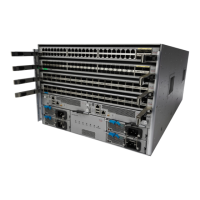

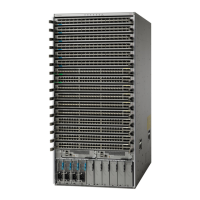

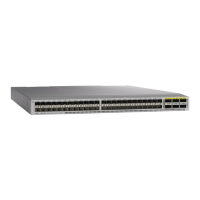
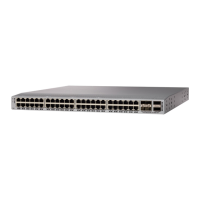

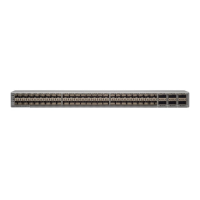
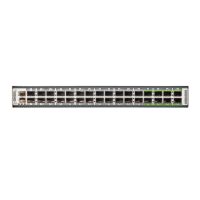

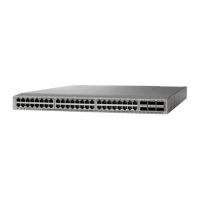
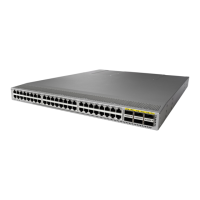
